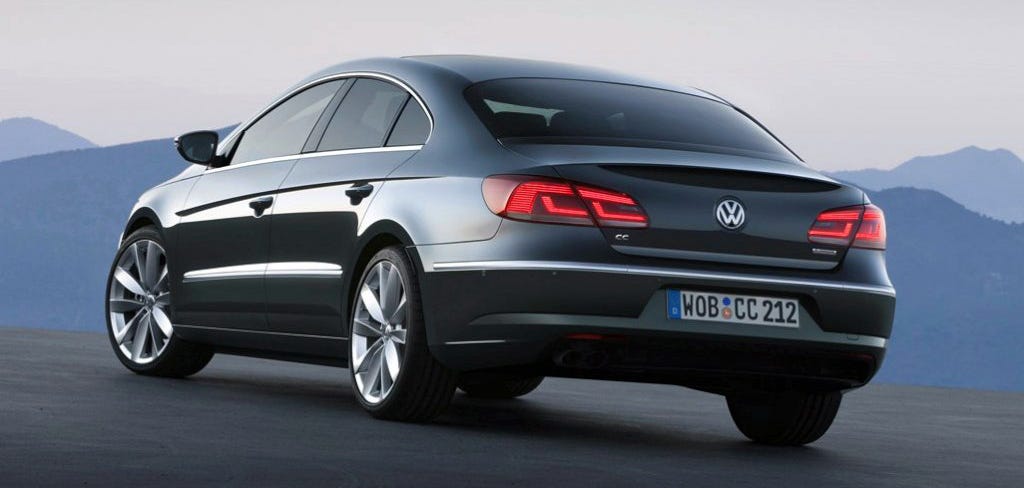Photo courtesy: Claudio N
Tear drop dials, ornamental wood for the dashboard and doors, headlamp washer system, electrically-controlled exterior mirrors, auto-dimming interior mirrors, touchscreen music system, bluetooth telephone, rain sensing wipers… the list of attention-grabbing features in the Volkswagen Passat of 2011 was endless.
At the time, when I took the fully automatic diesel engine for a spin around Mumbai bylanes and highways, the features mentioned above appeared gimmicky but useful nonetheless. However, what caught my attention was the Park Assist feature of the car. Press the button and the VW logo behind the car swivels open to reveal a wide-angle camera. Pull up the car next to a parked car, and keep moving ahead until the visual display on the instrument panel tells you to reverse.
Leave the steering wheel and keep your foot on the brakes while the car moves at a careful pace and parks itself. If need be, it will ask you to stop reversing and move forward with a visual display. And if you are too close to an obstacle, it gives you an audio alert. The upshot? Once you get the hang of it, you fall in love with Park Assist.
The cruise control mode makes you a speed demon, if you can manage it. But for most, it’s scary at best. How can you let the machine drive itself at a constant speed? I tried to but failed in city traffic. On the highways, it can be the fastest way to go to sleep. Then again, it’s very individual. Some might remain extra alert like me, and some might doze off.
The 2.0-liter turbocharged four-cylinder engine delivers a credible horse power of 200 and a torque of 207 Nm. The result? I went from 0-60 in 5.2 seconds and 0-100 in a mere 9.6 seconds. The best part is its braking system. The 16-inch Barcelona alloy wheels come to a concrete halt without any skidding, thanks to the disc brakes and the four-channel ABS with stability and traction control. The automatic start-stop system is impressive.
The moment you come to a complete halt at the traffic junction, the engine switches off, saving precious fuel. The moment you take your foot off the brake, it starts again. When I enter the underground parking lot of a mall, the darkness sensing headlights come on automatically to light up your path. Neat.
The Passat is a driver’s car all the way, be it in road handling, design or practicality. Some impressive features include the USB port inside the glove box, the Auto Hold function that prevents the car from going back on a steep climb and front climate seats whose air conditioning keeps the sweat off your back. Not to mention, tyre pressure monitoring system, sliding sunroof, finest fog lamps and LED daytime running lights. And then, there’s Attention Assist that alerts you with a loud sound if you are driving at a constant speed for 15 minutes and more.
If you can afford a fully-loaded car for under Rs 26 lakh, Passat was my pick for 2011. Sadly, the model was discontinued in India last year, and the US will follow suit in 2022.
TECH SPECS
Length: 189.2 in. Width: 73.7 in.
Height: 58 in. Wheel Base: 106.7 in.
Ground Clearance: 5.1 in. Kerb Weight: 3431 lbs.
Front Head Room: 38.4 in. Front Leg Room: 41.4 in.
Rear Head Room: 37.8 in. Rear Leg Room: 37.7 in.
Front Shoulder Room: 55.7 in. Rear Shoulder Room: 54.6 in
Luggage Capacity: 14.5 cu. ft. Maximum Seating: 5
Number of Cylinders: 4 Engine Size: 2 litres
Engine Type: Inline 4. Horsepower: 200 hp
Max Horsepower: 5100 rpm. Torque: 207 ft-lbs.
Drive Type: FWD
Prices: Rs 20.8 lakh (Trendline model), Rs 23.8 lakh (Comfortline) and Rs 25.65 lakh (Highline). All prices are ex-showroom Delhi.
(Originally published in The Sunday Guardian)
Other Stories You May Like:
Reality TV: When I Became the Scapegoat
My Encounter With a ‘Spirit Guide’




